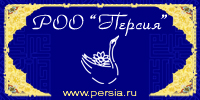 An "Impression" section opens this issue, featuring a picture story by Vladimir Ketkovich about Buryatia. The last issue of every year is traditionally devoted to one of the centres of Oriental Studies in Russia. This time we present Ulan-Ude, capital of the Republic of Buryatia.
An "Impression" section opens this issue, featuring a picture story by Vladimir Ketkovich about Buryatia. The last issue of every year is traditionally devoted to one of the centres of Oriental Studies in Russia. This time we present Ulan-Ude, capital of the Republic of Buryatia.
Tales of Transbaikalia
Modern science in Transbaikalia started with Oriental Studies. Editor-in-Chief of the Oriental Collection talked to Boris Bazarov, Corresponding Member of Russian Academy of Sciences, and Director of the Institute of Mongolian, Buddhist and Tibetan Studies (Ulan-Ude). Boris Bazarov spoke about main areas of Oriental Studies in Buryatia.
Natalya Bolsokhoeva. Tibetan Art of Healing.
The author presents painted tables used as a teaching aid for students of Tibetan medicine, which are now kept at the History Museum of Buryatia. Copies of these tables will be donated to the newly revived Medical School at Atsagat datsan. Gurzhem Frolova. "Bogdo-Heir Nikolay" in Buryat Songs of Praise.
Many traditional Buryat songs of praise have reflected a visit of Nikolay Aleksandrovich, Heir to Russian throne, to Transbaikalia.
Bair Dashibalov, Valentin Rassadin. Where Do Ancestors of the Mongols Come From?
The authors rely on research in archaeology, folklore, and linguistics to argue that ancestors of the Mongols once lived on the shores of the Pacific Ocean.
Andrey Strelkov. Wheel of Time.
Why the teaching of Kalachakratantra is most popular today, of all the systems of Buddhist thought? The author tries to find an answer to this question by telling us about this teaching, which has become the area of most intensive interaction between the world of Tibetan Buddhism and modern globalised world.
Svetlana Bardaleeva. Posthumous Portraits of Buddhist Monks.
The History Museum of Buryatia holds several sculpture portraits of Buryat lamas. They have been made posthumously and are used to store remains of a deceased Buddhist monk.
Mikhail Kharitonov. "And We Shall Arm Ourselves With Wolf's Will...".
The author studies how wolf images are reflected in worldviews of the Buryats and other peoples of Central Asia.
Natalia Zhukovskaya. Buryatia and the Buryats in the life of Moisei Krol'.
The author came across some articles by Moisei Krol' on Buryat ethnography published in Russian scientific journals before 1917, but after this date his name ceased to appear in print. But, in 1994, working in the archives of the Hoover Institution on War, Revolution and Peace, the author found copies of his articles written in 1930es, and two volumes of his memoirs...
Moisei Krol'. Years of Exile. Visiting the Holy Lama.
A chapter from Moisei Krol's unpublished memoirs, in which he tells about his conversations with Buryat lama Lubsang Sandan Tsydenov (1851-1922?). The next publication is also about this famous lama, an adept of Tantra.
Andrey Strelkov. Legends and Truth about the Great Lama.
A life story of lama Tsydenov. His disciples believe that he acquired siddhi (spiritual power) of immortality. Elena Batorova, Tatyana Kocheva. Ornaments of Zakamensk Craftsmen.
The story about a small but very interesting collection of ornaments and patterns created by Buryat craftsmen, who produced furniture in 1920es. Here traditional Buddhist ornaments are intertwined with Soviet symbols.
Vladislav Ketkovich. Offering on One's Own Doorstep.
A description of shamanistic rites in modern Buryatia, accompanied with photographs.
The Land of Orient
Evgeniy Matochkin. Moving Towards Each Other.
In 2004, Russia and India celebrated centenary of Svyatoslav Roerich's birth. The graphic language of this famous artist reflects both Western art of the 20th century and unique experience of Indian miniature, together with plastic perfection of ancient Indian sculpture.
Polina Pogadaeva. Glorious Stripes.
A history of Malaysian state emblem and state flag.
Nadezhda Emelyanova. Dry Leaf of Plane.
The history of Imam Shamil's letter, which is kept in Stavropol Museum of Regional History. The letter is written on a leaf of plane (Causasian beech), as is indicated in the letter itself.
Elizaveta Malinina. The Brush, Alive as Nature Itself...
Sesshu, Zen artist of the 15th century, equally mastered various artistic styles that came to Japan from China. But he painted not only Chinese "mountains and waters", but also landscapes of his native land, which are full of affection and warmth.
Svetlana Ryzhakova. Goddesses and the Tree of Wishes.
Worshipping a sacred tree is one of the most archaic universal phenomena in religion and culture, which does not vanish even in the most refined forms of religious culture. The author thinks that tree is the first and most precise symbol of Hinduism.
Nikita Sokolov. Travels of Chess.
The author argues that if there is a nation, which can dispute the right of India to be a home of chess, it is China. The article exposes Chinese, Japanese, and Mongolian versions of this ancient game.
Elena Fomicheva. Scents of Bangkok.
A description of Thai cuisine, preferences in cookery, and food culture of the people of Thailand.
As usual, in the end of this issue our reader will find traditional columns: "Reader" and "Orientnet".
Please e-mail your wishes, suggestions and comments to the following address: orientnet@rsl.ru. You can find the summaries of the previous issues online, by visiting our section of the Russian State Library Web-site: http://orient.rsl.ru/eng/






